Early ripe dessert variety of Nizhegorodskaya early honeysuckle
Who doesn't like to feast on a delicious and ripe berry from their bush? Summer residents and gardeners are happy to grow various fruit trees and shrubs on their plots, acquire interesting breeding varieties and exchange experiences with each other. On a summer day, the sweet taste of a berry with a slight sourness is irreplaceable, and only the lazy one did not speak about the benefits of honeysuckle.
We bring to your attention a description of an early-ripening variety of honeysuckle called Nizhegorodskaya early.
The content of the article
Description of the variety of honeysuckle Nizhegorodskaya early
This is the earliest and earliest variety. with edible fruits bright colors. The berries ripen at the very beginning of summer. Variety grow on household plots and on an industrial scale.
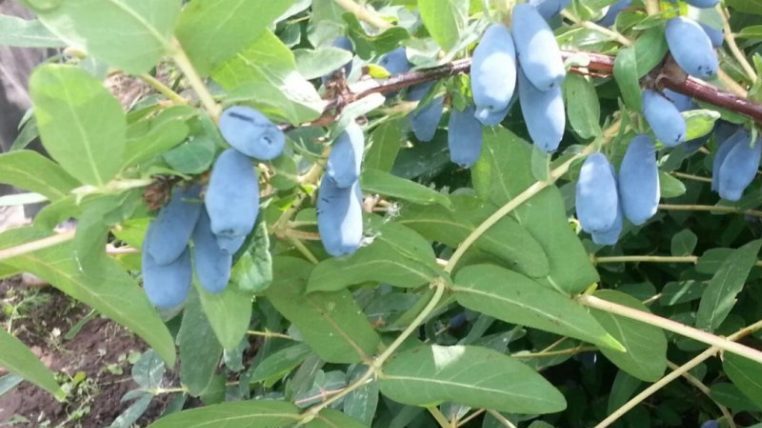
Origin and development
The variety is ideal for landings in the middle lane and gives a good harvest. He was taken out at the Nizhny Novgorod State Academy and included in the State Register in 1998. It became a seedling from free pollination and has been under strain testing since 1992.
Characteristics, description of appearance, taste
The shrub belongs to the dessert varieties of honeysuckle, has a medium size, dense and spherical crown. The branches grow vertically, reaching up to 1.7 m in height. The foliage is dark green, elongated, of medium size. The shrub has a fibrous root system.
The berry is pear-shaped, up to 1.5 cm long, weighing up to 1-2 g. Color from dark blue to violet, with a smooth coating and whitish dusting. The pulp has a sweet and sour taste, without bitterness.
Application features
The fruits of Nizhny Novgorod early-ripening honeysuckle are consumed fresh, canned and frozen. When harvesting, they are easily removed, without obvious damage to the skin, which contributes to long-term storage.
Productivity and ripening period
The berries ripen within 1-1.5 months after the flowering shrub. A young bush gives up to 2-3 kg of yield, at the age of 5 years it reaches a yield of up to 4.5-5 kg.
The fruits ripen from late May to mid June. Overripening should not be allowed so that they do not crumble under the bush.
Disease and pest resistance
The peculiarity of the Nizhegorodskaya early honeysuckle variety is that it is not susceptible to such a common disease as olive spot. With proper care and insecticide treatments, shrubs are pest resistant.
Frost and drought resistant
The variety gained popularity due to its high frost resistance. The low temperature is not terrible for him, so they do not cover the plantings in winter. Shrubs can withstand temperatures down to -40 ° C.
The vegetation of shrubs begins at a temperature of + 3 ° C, and flowering - from + 9 ° C. The drought of honeysuckle is not terrible. The plant does not need frequent watering.
If it rarely rains in summer, it is enough to spill the bush with one bucket of water under the root. After moistening the soil, the root layer of the earth is loosened. To humidify the air, the bush is sprayed with water. For the entire summer season, 2-3 waterings are enough, which indicates a high drought resistance of the plant.
Growing regions and climate requirements
The variety is suitable for planting in central Russia. It takes root well in most regions, adapts to any climate.
Advantages and disadvantages of the variety
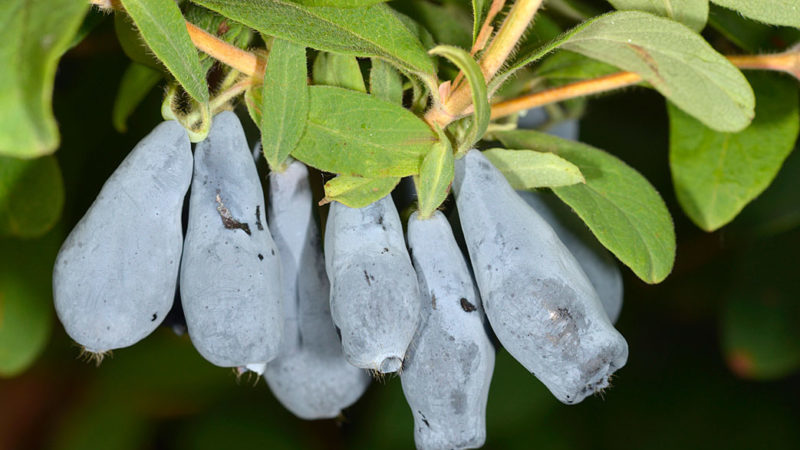
The clear benefits include the following:
- frost resistance;
- early maturation;
- good berry taste;
- dry separation of fruits;
- thick waxy skin on the berries;
- immunity to disease.
Among the shortcomings are noted:
- fast overripening of fruits;
- shedding of berries from a bush.
During the ripening period, experienced agronomists lay a film under the bushes so that the fruits remain intact and suitable for consumption.
Agrotechnics
Even an inexperienced gardener can handle the cultivation of honeysuckle. It is best to plant seedlings from late August to late September.
Choosing a place in the garden and preparing holes
Honeysuckle shrubs do not tolerate darkened places, so you need to choose a well-lit area for planting.
It is not recommended to plant one bush, there should be several to get a good harvest. Planting time is spring or autumn.
The holes are dug at a distance of 1-2 m from each other. The recommended depth is 40 cm.
Ground requirements
Honeysuckle tolerates all species well soils... Weakly acidic fertilizer is fertilized with organic matter, clay and sandy ones are filled with special planting soil when planting: a fertile layer of soil is mixed with rotted manure and poured into planting pits.
Important! Soil moisture should be moderate, so it is advisable to avoid planting in marshy areas.
1 bucket of organic matter, 0.5 l of wood ash, about 30 g of potassium sulfate are added to each prepared well. The components are mixed until homogeneous with the top soil. Sometimes an additional 100 g of double superphosphate is added.
Timing, scheme and landing rules
The optimum temperature for planting seedlings is 0 ° C and above. Before planting, the roots are examined, damaged or dry cut off.
The seedling is placed in the center of the prepared hole, the roots are straightened and covered with loose soil. The root is buried 5 cm. The seedling is well watered and the ground around the trunk is covered with mulch.
Growing features

The first 3 years of vegetation, the bush does not need special care and formation.... Dried branches are removed as necessary and soil moisture is monitored.
So that the stems and leaves are evenly illuminated and well blown by the wind, it is necessary to thin out the crown of the shrub. When the honeysuckle reaches 5 years of age, the crossed shoots are cut with pruning shears. The lack of nutrients in the soil affects the leaves of the honeysuckle, they turn yellow and fall off, therefore, in the spring, if the substrate leaves much to be desired, the bushes are fed with organic fertilizers in the recommended dosage.
In the first year of flowering, honeysuckle needs nitrogen fertilizers, such as urea. It is dissolved in water and the plant is watered. At the beginning of fruiting, shrubs feed solution of fermented herbs. Half-fill the barrel with cut grass, add water and insist on the sun for 2 weeks. For watering, the resulting infusion is diluted with water 1:10.
Instead of frequent watering, it is recommended to carry out fine sprinkling so that the leaves of the honeysuckle do not dry out and do not crumble from exposure to sunlight. The spraying procedure is carried out in the morning or in the evening every other day from the root collar of the bush to the crown of the head for at least 5 minutes.
The next day after watering, it is necessary to loosen the soil at the base of the root collar to saturate the earth with oxygen.
Pollinators
Nizhny Novgorod early honeysuckle is a pollinated variety. To obtain tasty and sweet berries, several other varieties are planted nearby, for example, Lakomka and Kuminovka.
Disease and pest control
Pests rarely attack honeysuckle, but aphids settle on young shrubs. The trunks of the shrub can be chosen by false scale insects, and the leaves are caterpillars.Therefore, in the spring, the culture must be treated with copper sulfate and the fallen leaves must be collected in time. Spraying for the prevention of diseases is carried out until the kidneys open.
You can get rid of uninvited guests with the help of the preparations "Rogor" and "Actellik". To process the crown, they use "Confidor" and "Intavir". If the leaves of the shrub begin to curl and turn yellow, fungicides and Bordeaux liquid are used to eliminate the symptoms.
Preparing for winter
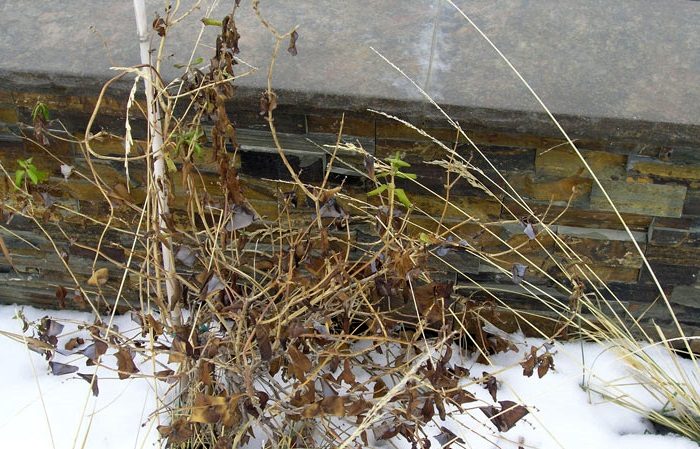
Nizhny Novgorod honeysuckle does not require shelter for the winter, since it calmly tolerates temperatures down to -40 ° C. In practice, no cases of freezing of culture in winter were observed. To increase winter hardiness in the fall, phosphorus and potassium fertilizers are applied under the plants: double superphosphate (up to 60 g) and potassium sulfate in the calculation of 40 g for one bush.
Growing difficulties
If the gardener follows the recommendations for caring for honeysuckle, there will be no problems with growing berries. With minimal maintenance, the shrub is very unpretentious and gives a consistently high yield.
Reproduction
There are 2 ways to breed:
- Cuttings. Time of the event - March. In spring, an adult bush is examined for the presence of lignified twigs up to 17 cm long. The shoots should be annual, with not yet blossoming buds. They are cut off and planted in the ground depending on the air temperature - into the greenhouse or outside.
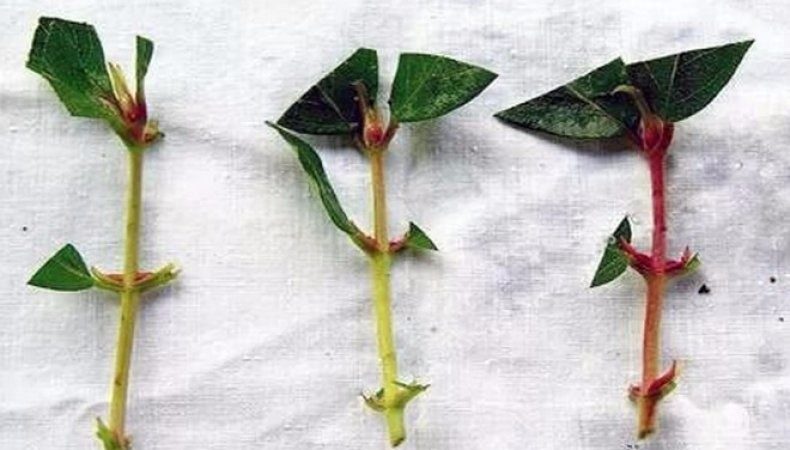
- Creation of root layers. The time of the event is June. After the end of the flowering period of honeysuckle, the lower young branches are selected. The shoots are bent to the ground until they touch and secured with a wire pin. Pour soil on top (about 3-4 cm) and wait for the formation of a new root system.
With the onset of spring, young shoots will be formed and ready for transplantation. They are separated from the mother bush with pruning shears and transplanted to the right place.
Important! When forming layering The soil sprinkled on top should always be slightly damp.
Harvesting
Berry picking begins in mid-June and ends at the end of the month. Ripe berries acquire a uniform purple color.
Under the bushes, sheets or film are laid so that the crumbling fruits do not disappear.
Reviews of experienced gardeners
The variety of Nizhny Novgorod honeysuckle has gained popularity among many gardeners.
Vera, Kemerovo: “I bought and planted a honeysuckle sapling of the Nizhegorodskaya early 3 years ago. Without much pruning (except for dry and broken branches), it grew to 1 m and, as far as I know, this is not the limit. I take care of berry bushes only in the spring - I prune and fertilize. The rest of the time you don't have to think about them. The harvest is good, the berries are large and sweet. "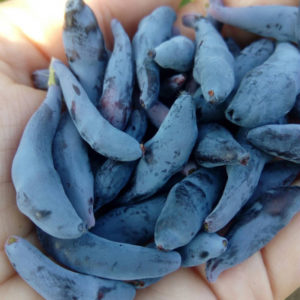
Larisa, Bryansk region:“I weed around when the grass grows, and I cut off the old dead branches. It bears fruit regularly, the bush gives 4-5 liters of berries, maybe more - it crumbles a lot, since we go to the country house only on weekends. Do not be lazy at the beginning of flowering to water and spray the bushes. If this is not done, the berry begins to taste bitter and grows small. I water at the end of May - a bucket per bush is enough. "
Marina, Nizhny Novgorod:“Honeysuckle is an unpretentious plant, but you need to plant at least 2, and preferably 3-5 varieties, because there must be cross-pollination. At the beginning of flowering, I spray the bushes with sweet sugar water to attract bees. "
Conclusion
The early maturing Nizhegorodskaya honeysuckle variety has many advantages. It is frost hardy, ripens early, has good immunity, grows throughout Russia, does not require much effort and time, and gives a stable harvest.